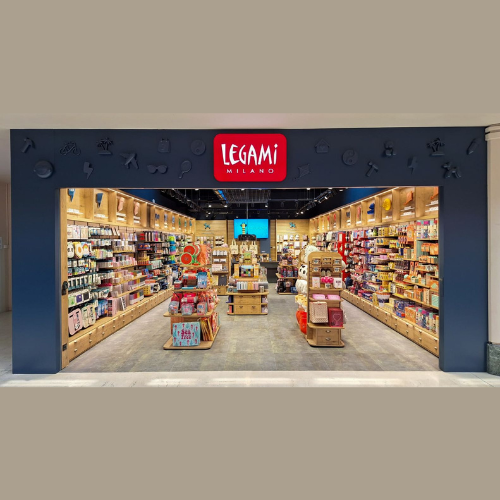In a world of technology, speed and mass production, sometimes pleasure can be found in traditional simplicity and unwavering attention to detail. Meet Hugo Spiegl, a second generation printer and bookbinder, who is keeping alive the traditional artisan skills of bookbinding from his bindery – The Stamford Notebook Company – in Stamford, Lincolnshire.
Established in the 1950s by Hugo’s father Peter, Spiegl Press Ltd (the parent company of The Stamford Notebook Company) has its roots firmly embedded in the commercial printing and bookbinding industry. In those days Peter printed and bound stationery items such as ledgers, pads, letter heads and business cards for the professional trades like solicitors, surveyors, sales rooms, estate agents and more.
With a passion for artisan printing and bookbinding, Hugo – who was introduced to printing at the age of 13 when at school – joined Spiegl Press in 1990.
“Back then commercial printing was the bread and butter for the company,” says Hugo. “We offered a bespoke print and binding service. We were – and still are – completely self-sufficient, doing everything in-house. And yes, although we’d moved with the times in terms of technology, out the back in the bindery we still used our Heidelberg presses and Smyth book sewer.”

When Hugo first joined, a large part of the business was in supplying lot numbers and associated stationery to agricultural salesrooms around the country, but the foot and mouth outbreak in 2001 shut that business down almost overnight. “It was scary really how quickly that business fell away,” recalls Hugo. “But by that time, we were a very well established commercial printer, so we were able to weather that storm. But it did make us think about how else we could diversify the business.”
In 2008, the financial crisis struck and business took another hit. “We thought ‘what can we do now?’ and quickly realised that the answer was already there,” says Hugo. “We had all the traditional skills for printing and book binding. We had the equipment and then we had the idea. We would make beautiful hand bound notebooks.”
It was a big leap for the business shifting its focus from being a commercial printer providing a service to creating products. But it made perfect sense. The company had been printing and book binding by hand since the 1950s, “we just had to work out what the market wanted,” says Hugo.

Hugo and the team prepared a batch of colourful cloth-covered notebooks for Top Drawer at Earls Court in 2009. “The stand was an eyeful of colour,” remembers Hugo. “And the market loved it! And we’ve never looked back.”
Today, Hugo is joined by fellow director, Aimee Fionda. Aimee brings a wealth of experience in product development and brand management. Together they both have vision for the brand to be the ‘Home of British Made Stationery’.
Aimee says: “The company’s aims have always been to bind the best notebooks and journals for writing and drawing, using the best handwriting paper, leathers and bookbinding cloths available, using British made, sustainable materials wherever possible.
“Our paper is made to our own spec from James Cropper in Cumbria. It is specifically chosen for its excellent quality when using a fountain pen with little dragging and ink bleeding. It’s is a smooth, reasonably opaque sheet allowing very little show-through. It will take a wide variety of ink pens as well as pencil.”

The company’s emphasis on being a British made product isn’t just about where its books are created. “We are conscious of where our products come from and we strive to buy British made materials where possible,” says Aimee. “We have also minimised using plastic and created paper based packaging solutions, including paper tape. Even our gift wrapping paper and ribbon are made using recycled materials.”
It is out in the bindery that this commitment to British-made comes alive. Out here it is like stepping back into time, with skilled craftsmen using centuries old techniques (and some centuries old equipment!) to carry out all aspects of production; including the printing of paper, folding, sewing, trimming, case making and casing in. This also extends to leather goods, where the company cuts, sews and finishes all of its leather products by hand.
“We are keeping alive traditional artisan skills,” says Hugo. “These are skills that would otherwise be lost. There’s a sense of pride when you can make an entire notebook completely by hand.”
When Covid struck in 2020, business was able to continue without too much disruption to supply chains. “We were already sourcing most of our materials from within the UK, so nothing really changed for us on that front,” says Hugo. “We had to make some changes in the bindery to keep the team safe while they worked, but, in fact we saw a big uptick in business. Our B2B and retail business fell away, but we made up for this – and more – with our B2C online business.”

As the country opened up again post-Covid, business continued to grow for The Stamford Notebook Company, with online sales booming; “particularly around personalised products,” notes Hugo. “This has been a huge marketing opportunity for us, with 90% of our online sales being personalised. I don’t see this changing in the future. We offer a highly personalised service, where customers can customise their notebook or diary or tasting book – whatever they are purchasing.”
Over the years the product range has continued to expand, so now as well as notebooks, the company also sells diaries, refillable journals, visitor books, condolence books, dinner party books, wine cellar books, recipe journals, tasting note journals, sailing log books, game books, sketch books, wedding planners and much more.
“We’re in a very unique position in that we have complete control over everything,” says Hugo. “If one of the team has an idea, we can go out into the bindery and within in a few hours, make up a sample. Not many businesses can do that!”
The company’s B2B business is also recovering – and growing – post-Covid. “Our USP is handmade and British-made, and that really resonates with the market,” says Hugo. “I think people were caught out during Covid and realised how reliant we’d become on the Far East. Suddenly supply chains dried up. Yes, there will always be a market for cheaper products, but we’re not competing in that market. Our customers want handmade, they want British made. We have a story we can sell them, and they in turn have a story they can sell.”
As well as supplying to retailers, the company also makes bespoke products for corporate customers tailoring products to include logos, personalised endpapers, a belly band and presentation box. “And as we print all paper ourselves, we can offer bespoke pages to deliver formats and layouts to suit any requirement,” says Hugo. “Our in-house production means we can offer very short runs and even one-offs.”
The Stamford Notebook Company has made bespoke products for all sorts of clients, even the President of the United States! “We were honoured to be asked to supply the G7 Summit in Cornwall in 2021 with hand bound leather notebooks,” says Hugo. “After sign-off from No.10 we created two bespoke hand bound notebooks, which were carefully hand dyed using British leather from Northamptonshire in G7 colours and finished with G7 logo embossing.”
Commercial print is still an important part of the business; especially bespoke wedding stationery, using a variety of traditional printing methods such as letterpress, hot foil embossing, thermography and offset litho. And the company is still one of the major players supplying stationery to agricultural salesrooms, as well as digital printing of products like brochures and leaflets.
The Stamford Notebook Company is a perfect example of how a business has adapted to change from not only consumer preferences, but also the market conditions. Being set up to do everything in-house has meant the company can react to change quickly.
“It really was a bold move when we shifted our focus to making products, as opposed to commercial print,” says Hugo. “But you’ve got to be bold in business. You have to hold your nerve and believe in what you’re doing. We could’ve changed the way we do business and chased the mass market, but we haven’t. We’re passionate about what we do. We believe in what we do. If you’re making a product you have to make it the best you possibly can.”

























